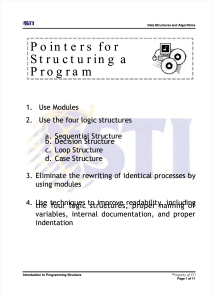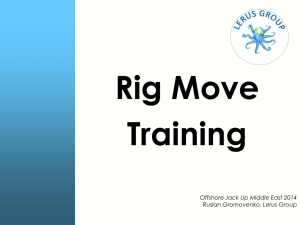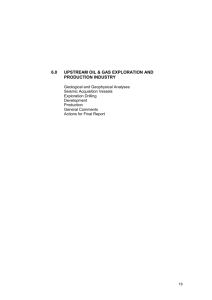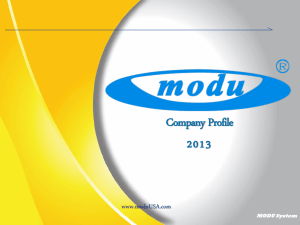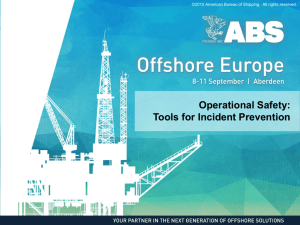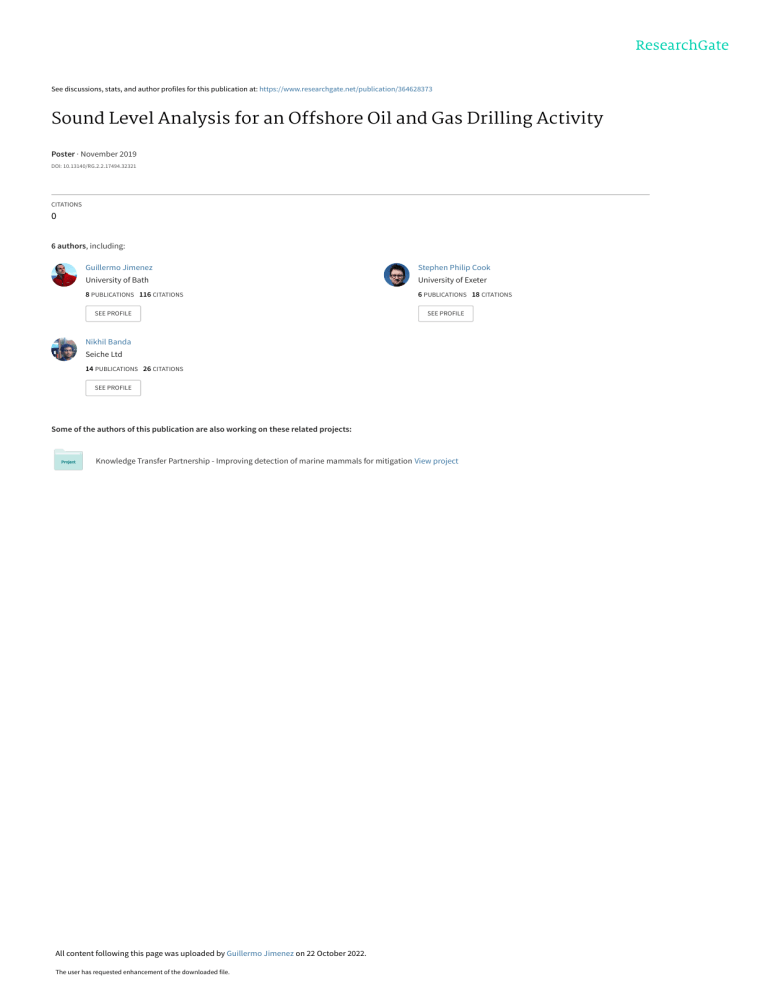
See discussions, stats, and author profiles for this publication at: https://www.researchgate.net/publication/364628373 Sound Level Analysis for an Offshore Oil and Gas Drilling Activity Poster · November 2019 DOI: 10.13140/RG.2.2.17494.32321 CITATIONS 0 6 authors, including: Guillermo Jimenez Stephen Philip Cook University of Bath University of Exeter 8 PUBLICATIONS 116 CITATIONS 6 PUBLICATIONS 18 CITATIONS SEE PROFILE SEE PROFILE Nikhil Banda Seiche Ltd 14 PUBLICATIONS 26 CITATIONS SEE PROFILE Some of the authors of this publication are also working on these related projects: Knowledge Transfer Partnership - Improving detection of marine mammals for mitigation View project All content following this page was uploaded by Guillermo Jimenez on 22 October 2022. The user has requested enhancement of the downloaded file. Sound Level Analysis for an Offshore Oil and Gas Drilling Activity Guillermo Jiménez *1, David Hedgeland2, Stephen Cook1, Nikhil Banda1, Phil Johnston3, Ed Oliver3 1Seiche Ltd., BP2, AutoNaut Ltd.3 • Source level prediction for MODU facilities commonly use historical data (from vessels and older MODU’s). • Available acoustic data are often limited by the number of sample locations and distances from a facility (kms to 10’s kms). • A survey was carried out to characterise the acoustic output of a ‘modern’ 6th generation MODU. MODU A sound field mapping survey was carried out by Seiche Ltd., on behalf of BP, during normal operations of a 6th generation Mobile Offshore Drilling Unit (MODU) using five drift buoys and a USV. The poster briefly describes the operational aspects of the survey, to then present the analysis of sound level dependence with various factors. AutoNaut Drift Buoys • Collection method: drift by swell and currents. • 6th generation MODU • Deep water area (~2.3 km) with significant vessel activity. • Collection method: remote control and waypoint navigation. • Parts: mast (strobe and radar reflector), metal housing (battery and tracking system), e-tube, wet leg, and hydrophone array. • 8 azimuthal thrusters dynamic positioning. • Intermittent periods of drilling during DP. Figure 1 The MODU (John Regan, MarineTraffic.com). • Hydrophone array: 2 pairs of hydrophones at 30 and 60 m. • Parts: communications system, hull-mounted PAM unit and 25 m towed hydrophone cable. Figure 2 Drift buoys on board the survey vessel, before deployment. Survey Area and Data Collection • Acoustically and operationally busy area: tackled with sound mapping strategy and communication protocol (SIMOPS). • Endurance: energy harvesting and wave foil propulsion (quiet). The Dataset • Dataset content: audio (.wav, 250 ks/s), GPS (buoys and USV), AIS • Identified acoustic sources ❑ MODU: continuous LF sound, HF tones ❑ Seismic source pulses: transient • 500 m safety exclusion zone: vessel movements restricted inside this area. • Drift buoy effort: 41 h, 1-5 km from MODU • USV Towed PAM effort: 75 h, 5.5 km from MODU. Primary effort within 500 m exclusion zone (daylight, CPA ≈ 140 m). Survey vessel outside exclusion zone. • Outcome: 140 m – 5.5 km coverage, three receiver depths (25, 30, 60 m), 117 hours of continuous valid data. Figure 4 Navigation tracks of drift buoys (yellow) and USV (blue). Figure 3 5m USV designed by AutoNaut. broadband with energy < 250 Hz ❑ Close passes of vessels: continuous broadband noise with LF tones ❑ ‘Chirps’: sequence short frequency sweeps, 25 kHz central frequency ❑ ‘Pings’: transitory 38 kHz tones ❑ Self-noise of USV recording system: continuous 5.5 kHz tone. MODU Chirp Self-Noise Ping Figure 5 Spectrogram with 4 of the 6 most characteristic sounds in the survey. Close passes of vessels and seismic energy were successfully excluded from the analysis. Data Analysis. Sound Level variation with time, range, frequency and azimuth Figure 6 Sound level rms with time (scatter). • Sound levels 120-140 dBrms. • Large short-term variability: 10-15 dB within 1’ segments. • No evident increase in sound level due to nearby vessels (r > 200 m). Figure 7 Sound level rms with range (box & whisker) Figure 8 Sound level spectrum (box & whisker) • No evident attenuation of sound levels with range (140 – 5,500 m). • Flat SPL(r)? Caused by multipath reflections, which dominate at ranges greater than 1 km for f < 250 Hz (confirmed by simulations). • Measured sound is predominantly lowfrequency (99% energy < 100 Hz). • Measured sound levels comparable to ambient noise levels at 100-500 Hz for high vessel traffic. • Tonal components close to MODU. • Low-frequency: omnidirectional response < 150 Hz (~100 m spacing between thrusters). • High-Frequency: fluctuations from thruster load and depth. • High confidence that processed sounds are associated with MODU ❑ Seismic pulses and vessel close passes excluded from analysis ❑ Chirps, pings and self-noise removed by downsampling ❑ Minimal contribution of ambient noise and seismic reverberation • Back-propagation: the sound level map of a source can be used to calculate its Source Level spectrum (SL) by fitting the simulated Transmission Loss (TL) to the measured Received Level (RL) for each frequency band. • Forward-Model: simulated RL at any location is the difference between SL and TL. • Acoustic variability ❑ Complex dependence of sound levels with time, range, azimuth ❑ Causes: propagation path, thruster depth and load, receiver depth 𝑹𝑳 𝒊, 𝒓 = 𝑺𝑳 𝒊 − 𝑻𝑳 𝒊, 𝒓 View publication stats • No directionality observed. Conclusions Discussion • Point source assumption in the propagation model results in overestimated sound levels in the near field of the MODU. • Received Level simulations are only valid in the far field of the source. Figure 9 Sound level rms (2D map) • Characteristics of measured sound ❑ Predominantly low-frequency (99% energy < 100 Hz) ❑ Tonal components close to the MODU attenuate with range Figure 10 Source level estimation at 250 Hz. Fitting of simulated transmission loss to measured received levels. • Source Level Spectrum of MODU ❑ Measured sound levels lower than simulations in near field ❑ Source level only applicable for far-field propagation modelling
